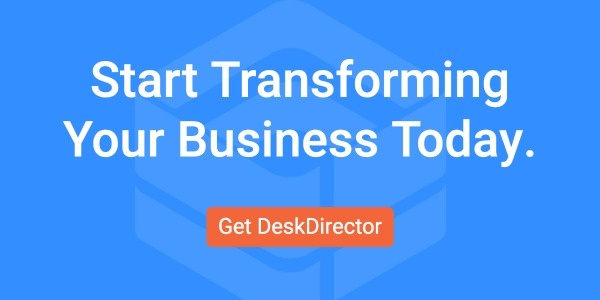Tracking key performance indicators (KPIs) can be the difference between a profitable year and a loss-making one.
Business leaders need to know exactly where their company stands at all times, so establishing and tracking company-specific KPIs is essential. Monitoring these KPIs provides visibility into performance and allows leaders to make educated decisions on future goals and strategies.
And while that’s undoubtedly the case for all businesses, managed service providers (MSP) businesses must especially rely on the information given by KPIs. On average, 30% of MSPs report that acquiring more customers is a leading challenge. Other MSPs often worry about hiring, supporting remote staff, and dealing with advanced security threats. Strategic decisions can be made in response to all of these challenges with the right KPIs and data tracking.
Keep reading for the 8 essential KPIs that all MSPs should be tracking to guide their overall business towards long-term success and maximize the use of their client portal software.
Note: We’ve put a special emphasis on customer service KPIs in the list, but revenue-related metrics such as MRR are also important!
1.First Response Time (FRT)
Tracking FRT benefits both MSPs and their potential clients. When potential customers do research into MSPs , they often want to know how long it takes for MSPs to first respond to a ticket opened in their custom client portal. Studies even show that clients are more willing to stick with a business if the first response time is quick, so FRT is useful information for users to have. For MSPs themselves, tracking FRT helps them ensure that their teams are on track and respond to inquiries quickly and efficiently.
2. Average Response Time
In addition to First Response Time, MSPs should pay attention to the average time it takes to respond to any client correspondence. Clients expect a fast turnaround, so both FRT and ART should be on the lower end. The average response time in the industry is around 3-5 hours, so clients expect a response within that time frame.
To calculate Average Response Time:
Total time taken to respond during X period
__________________________________________
# of replies sent during X period
It’s worth noting that ART is different than average time to acknowledge. Acknowledging a client can be done with a simple automated email stating that techs are working on their tickets. A response, however, consists of a real-life employee answering a client and starting a back-and-forth conversation to actively resolve the ticket.
3. Average Resolution Time
Some KPIs are centered around the customer’s needs, and some are more business-specific (like those related to revenue). Average resolution time, however, impacts both ends. Clients expect speedy ticket response and resolution, which is a major factor in client retention.
Overall, the faster tickets are resolved, the more tickets can be solved per tech per day. So, faster ticket resolution leads to better efficiency, satisfied customers, AND lower costs.
To calculate Average Resolution Time:
Total time taken to resolve tickets during X period of time
_________________________________________________________
# of tickets resolved during X period of time
4. Customer Satisfaction Score
Keeping the customer satisfied is a necessity for business success. It’s recommended that MSPs send out frequent customer surveys, even ones that take just a minute to fill out. By assigning each response a numerical value, you then have a quantifiable way of calculating customer satisfaction.
To calculate Customer Satisfaction Score
# of positive responses during X period
__________________________________________ x 100
Total surveys sent during X period
5.Customer Churn Rate
82% of organizations agreed that customer retention costs less than customer acquisition. So, monitoring customer churn rate is an important step in increasing customer retention. If you discover that customer churn increased during a certain period, you can look into what might have been done differently during that period to prevent similar churn. In general, keeping customer churn under 10% is ideal for MSPs.
To calculate Customer Churn Rate:
Customers at beginning of x – customers at end of x
_______________________________________________ x 100
Customers at the beginning of X
6.Customer Lifetime Value (CLV)
By calculating CLV, you’ll have insight into the total worth of a client throughout their tenure with your business. This can help you pay attention to long-term goals, like building a loyal customer base that repeatedly engages in services, rather than more short-term wins.
To calculate CLV :
Average MRR x Average amount of time clients stay with you
Note: there are multiple ways to calculate CLV; this is just one of them
Keep in mind that CLV should always be higher than Customer Acquisition Cost (CAC)!
7. Cost per Ticket
MSPs are one step closer to improving the utilization of their client portal software and help desk when they find out how much money is spent to resolve each ticket. This number can be used to see if staff and IT automation are working productively. Comparing cost/ticket over several periods of time also provides insight into the long-term cost trends of a business.
To calculate Cost per Ticket:
Total operating costs of IT support operation during X period
__________________________________________________________
Total ticket volume during X period
8. Outstanding issues
The last essential KPI for MSPs is simple but effective. How many outstanding issues/tickets are there at the end of a certain period of time? This can be a week, month, year, or any other time period. This metric is great for comparing trends across time and ensuring that outstanding issues remain below a certain threshold at all times.
To calculate Outstanding Issues:
Total # of tickets during X periods − # of tickets solved during X period
Conclusion
There are a variety of key performance indicators that MSPs can track to ensure that in the SaaS-heavy era of digital transformation, their services and client portal software stand out from the crowd. By tracking these 8 essential metrics, MSPs are heading in the direction of long-term customer satisfaction and success.
If you want to ensure you’re hitting all your KPIs and boosting client retention, sign up to try DeskDirector.









